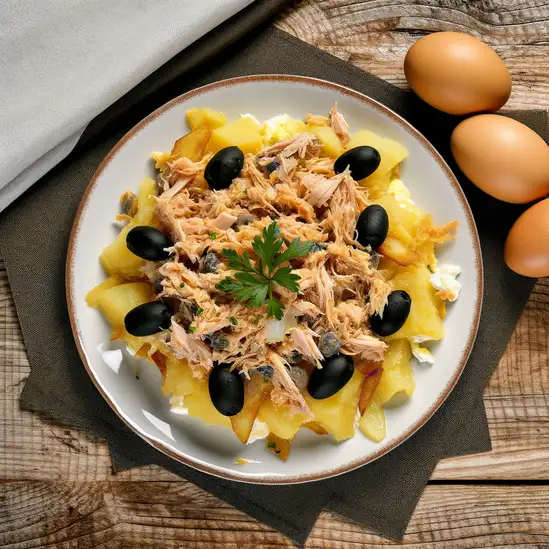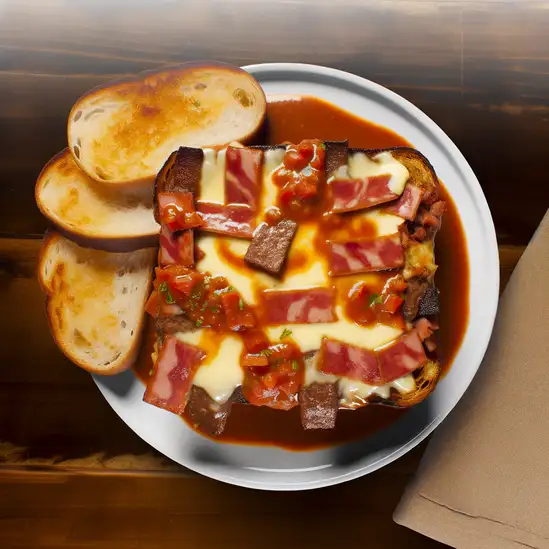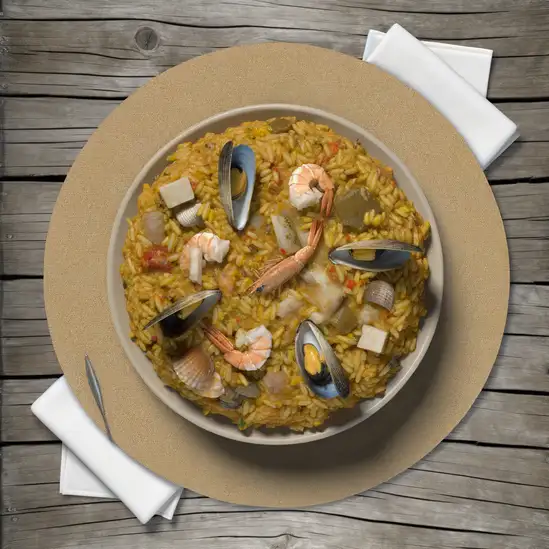



If you find yourself wandering through Lisbon,don’t miss the chance to explore Santos-o-Velho — it’s like stepping into a lively,authentic neighborhood where the city’s soul really hums. The vibe here is effortlessly cool but cozy,with narrow cobbled streets that invite you to slow down and soak in the everyday rhythm of life. You’ll catch the scent of fresh seafood mingling with the faint aroma of grilled sardines from local tavernas,while the chatter of neighbors and the occasional strum of a guitar spill out from open windows. What makes Santos-o-Velho stand out is its blend of old and new. You’ll see centuries-old buildings with colorful azulejos standing shoulder to shoulder with trendy cafes and art galleries. It’s a place where tradition meets creativity,and you can feel that energy in the air. On weekends,the Mercado de Santos buzzes with vendors selling fresh produce,cheeses,and pastries — perfect for grabbing a picnic to enjoy by the nearby river. The neighborhood’s charm is in its details:the way sunlight filters through leafy trees onto quiet plazas,the friendly nods from locals who’ve lived here for generations,and the soft hum of Fado music drifting from a tucked-away bar as evening falls. Visiting Santos-o-Velho feels like being welcomed into a warm,vibrant community where every corner has a story waiting to be discovered.
The information on this page is currently being reviewed by Tripkliq and should be used as a guide only
Eng word: Hello
Eng pronunciation: Oh-lah
Local language: Olá
Eng word: Goodbye
Eng pronunciation: Ah-deh-oosh
Local language: Adeus
Eng word: Thank you
Eng pronunciation: Oh-bree-gah-doo
Local language: Obrigado
Eng word: How much
Eng pronunciation: Kwahn-too koos-tah
Local language: Quanto custa
Eng word: Toilet
Eng pronunciation: Bahn-yay-roo
Local language: Banheiro
Eng word: Help me
Eng pronunciation: Ah-zhoo-dee mee
Local language: Ajude-me
Eng word: Yes
Eng pronunciation: Seem
Local language: Sim
Eng word: No
Eng pronunciation: Now
Local language: Não
Eng word: Excuse me
Eng pronunciation: Kohm lee-sen-sah
Local language: Com licença
Santos-o-Velho is one of the oldest neighborhoods in Lisbon, dating back to the 12th century. It was named after the Church of Santos-o-Velho, which is dedicated to the Holy Martyrs of Lisbon.
The Church of Santos-o-Velho, built in the 13th century, is a significant historical landmark. It has undergone several renovations over the centuries, blending Gothic, Manueline, and Baroque architectural styles.
Santos-o-Velho was once a favorite residential area for Portuguese nobility and royalty. The neighborhood's elegant palaces and mansions reflect its aristocratic past.
In recent years, Santos-o-Velho has transformed into Lisbon's Design District, attracting artists, designers, and creative professionals. The area is now known for its trendy shops, galleries, and studios.
Located in Santos-o-Velho, the Museu Nacional de Arte Antiga is Portugal's most important art museum. It houses an extensive collection of European and Asian art, including works by Hieronymus Bosch and Albrecht Dürer.
During the Peninsular War, Santos-o-Velho was occupied by French troops. The neighborhood's strategic location made it a key point of defense for Lisbon.
Santos-o-Velho is situated along the banks of the Tagus River, offering stunning views and a picturesque setting. The river has played a crucial role in the neighborhood's history, serving as a vital trade and transportation route.
Santos-o-Velho is renowned for its beautiful azulejos (traditional Portuguese tiles). Many buildings in the neighborhood are adorned with these intricate and colorful tiles, showcasing Portugal's rich artistic heritage.
Every June, Santos-o-Velho comes alive with the Santos Populares Festival, celebrating the feast days of Lisbon's patron saints. The streets are filled with music, dancing, and traditional food, creating a vibrant and festive atmosphere.
In Santos-o-Velho, the most common Power Adaptor is Type C, Type F.



A traditional Portuguese dish made with shredded salted cod, onions, and thinly chopped fried potatoes, bound together with scrambled eggs and garnished with black olives and parsley.

Famous Portuguese custard tarts with a flaky pastry crust and a creamy filling, often enjoyed with a sprinkle of cinnamon and powdered sugar.

A comforting soup made with kale, potatoes, onions, and chorizo, often served as a starter in Portuguese meals.

A hearty sandwich originating from Porto, consisting of layers of cured meats, sausage, and steak, topped with melted cheese and a rich tomato and beer sauce.

A seafood rice dish cooked with a variety of shellfish and fish, flavored with herbs and spices, often served in a rich broth.

Cod fritters made from salted cod, flour, eggs, and parsley, typically served as a snack or appetizer.
Lisbon feels like a city that’s been gently kissed by the sun and the sea,where every street corner hums with life and stories. Imagine wandering through narrow,cobbled alleys lined with pastel-colored buildings,their azulejo tiles catching the light just right. The air carries a mix of salty ocean breeze and the rich aroma of freshly baked pastéis de nata—those flaky custard tarts you’ll find in every bakery. There’s a rhythm here,a kind of laid-back energy that invites you to slow down and soak it all in.
You’ll hear the soulful strains of fado music drifting from cozy taverns,a haunting soundtrack that feels like the city’s heartbeat. Locals chat animatedly over glasses of vinho verde or ginjinha,a cherry liqueur that’s as sweet as the conversations. The city’s hills offer stunning views where terracotta rooftops spill down toward the Tagus River,and the sunlight shimmers on the water like a thousand tiny mirrors.
Lisbon’s charm lies in its blend of old and new—ancient trams clatter past sleek street art,and centuries-old castles overlook buzzing markets filled with fresh seafood and vibrant produce. It’s a place where history and modern life dance together effortlessly,inviting you to explore,taste,and feel its unique pulse. Trust me,once you’ve wandered through its neighborhoods and tasted its flavors,Lisbon stays with you long after you leave.
Imagine stepping into a place where the ocean breeze carries the scent of blooming jacarandas and the distant hum of traditional Portuguese guitars fills the air—that’s Funchal for you. This city feels like a warm embrace,perched on the lush,rugged coastline of Madeira. Walking through its cobbled streets,you’ll notice vibrant markets bursting with fresh tropical fruits and the rich aroma of freshly baked bolo do caco bread. The colors here are alive:from the deep blue Atlantic stretching endlessly to the bright bougainvillea cascading down old stone walls.
Funchal’s charm lies in its blend of old-world grace and lively,modern spirit. Locals chat animatedly over glasses of Madeira wine in cozy tavernas,while street art peeks out from unexpected corners,telling stories of the island’s history and culture. The city pulses gently with a relaxed rhythm—you can feel it in the slow,deliberate pace of life and the genuine smiles of the people you meet.
Don’t miss the chance to ride the cable car up to Monte,where the views make your breath catch,or to wander through the botanical gardens,where exotic plants and butterflies create a quiet sanctuary. And when night falls,the harbor lights twinkle like stars,inviting you to savor fresh seafood paired with that sweet,fortified wine Madeira is famous for. Funchal isn’t just a destination; it’s a feeling you carry with you long after you leave.
If you ever find yourself dreaming of a place where the ocean breeze carries the scent of salt and blooming hydrangeas,Ponta Delgada is that kind of spot. It’s the lively heart of São Miguel Island in the Azores,and the moment you step into its cobbled streets,you feel this warm,welcoming pulse—like the city itself is breathing with you. The colorful buildings,with their intricate stonework and bright shutters,seem to tell stories of centuries past,while locals chat animatedly over coffee in cozy cafés that spill out onto sun-dappled squares.
Walking along the marina,you’ll hear the gentle slap of waves against boats and the distant call of seagulls,mingling with the laughter of children playing nearby. The air is fresh,tinged with the promise of adventure,whether you’re about to explore volcanic craters or dive into a plate of freshly caught seafood. Speaking of food,don’t miss trying the local cozido—a stew slow-cooked underground by volcanic heat,rich with flavors that feel like a warm hug on a cool day.
What really makes Ponta Delgada special is its blend of old-world charm and vibrant island life. There’s a relaxed rhythm here,where time slows just enough for you to savor a glass of local wine while watching the sun dip behind the hills. It’s a place that invites you to linger,to explore,and to fall a little in love with the simple,beautiful moments that make travel unforgettable.
Imagine stepping into a city where every corner hums with a quiet,soulful energy—that’s Porto. It’s a place where the old world meets a lively,modern pulse,wrapped in the warm glow of terracotta rooftops and the shimmering Douro River. Walking through its narrow,cobbled streets,you’ll catch the scent of freshly baked pastéis de nata mingling with the salty breeze from the Atlantic. The city feels alive but unhurried,like it’s inviting you to slow down and savor each moment.
Porto’s character is deeply rooted in its history,yet it’s effortlessly cool. You’ll find colorful azulejo tiles telling stories on building facades,while locals chat animatedly over glasses of rich,ruby-red port wine in cozy,tucked-away taverns. The sound of Fado music drifts softly from a nearby café,adding a layer of melancholy beauty to the evening air. It’s a city that wears its heart on its sleeve—warm,genuine,and a little bit mysterious.
What really makes Porto stick with you is how it tastes and feels. From the first sip of a perfectly chilled glass of Vinho Verde to the crunch of a francesinha sandwich packed with layers of flavor,the city’s culinary scene is a delicious adventure. And when you climb up to the Dom Luís I Bridge at sunset,watching the city light up like a living painting,you realize Porto isn’t just a place to visit—it’s a place to feel alive.
Barcelona feels like a vibrant mosaic where every corner pulses with life and color. The moment you step onto its sun-drenched streets,you’re wrapped in a warm Mediterranean embrace—salt in the air,the distant hum of waves mingling with lively chatter from bustling cafés. The city’s energy is contagious,a blend of old-world charm and modern creativity that invites you to slow down and savor each moment.
Wandering through the narrow alleys of the Gothic Quarter,you’ll hear the soft clinking of glasses and the melodic strum of a street guitarist,while the scent of fresh-baked bread and roasting coffee drifts from cozy bakeries. Barcelona’s architecture is like a living art gallery—Gaudí’s whimsical buildings,with their undulating lines and vibrant mosaics,feel almost dreamlike against the bright blue sky. It’s a place where history and imagination dance together.
Food here is a celebration in itself. Imagine biting into a perfectly crispy,golden croqueta or savoring the rich,smoky flavors of a traditional paella,all washed down with a glass of chilled cava. The city’s markets,like La Boqueria,burst with colors and aromas—ripe tomatoes,fresh seafood,and fragrant herbs—that make you want to taste everything.
What makes Barcelona truly special is its spirit:a city that lives passionately,where locals and visitors alike gather to share stories,laughter,and the simple joy of being in a place that feels both timeless and alive. Trust me,once you’ve experienced it,you’ll carry a piece of Barcelona’s magic with you long after you leave.
Imagine stepping into Palma,and instantly feeling the gentle Mediterranean breeze wrap around you,carrying the scent of salty sea air mixed with freshly baked ensaimadas from a nearby bakery. This city pulses with a laid-back yet vibrant energy—where ancient stone streets meet sleek modern cafes,and the golden light of the sun casts a warm glow over the terracotta rooftops. Palma isn’t just a place to see; it’s a place to soak in,with its lively plazas where locals chat over cortados and the distant hum of guitar strings drifting from a tucked-away bar.
Wandering through the old town,you’ll find yourself mesmerized by the soaring Gothic cathedral,its intricate details catching the sunlight in a way that feels almost magical. Around every corner,there’s a story—whether it’s the colorful market stalls bursting with fresh produce and spices or the quiet courtyards where bougainvillea spills over ancient walls. The city’s character is a beautiful blend of tradition and modernity,where centuries-old architecture sits comfortably alongside trendy boutiques and art galleries.
And the food—oh,the food! Tapas here are an experience,from tender sobrassada to briny olives and perfectly grilled seafood,all paired with a glass of local wine that tastes like sunshine in a bottle. Palma invites you to slow down,savor each moment,and feel like you’re part of a living,breathing canvas painted with warmth,history,and a touch of Mediterranean magic.
Scammers may install skimming devices on ATMs to steal card information from tourists withdrawing cash.
Scammers may pose as charity workers and pressure tourists into making donations to fake causes.
Some taxi drivers may take longer routes or charge inflated fares, especially if tourists are unfamiliar with the area.
Shops in tourist-heavy areas may sell low-quality souvenirs at inflated prices, targeting unsuspecting visitors.
Unlicensed guides may offer tours but provide little value or incorrect information, charging high fees for their services.
Crowded areas, such as trams, markets, and tourist attractions, are hotspots for pickpockets targeting distracted tourists.
Some restaurants may add extra items or inflate prices on the bill, assuming tourists won't notice.
Games like the shell game or card tricks are set up to lure tourists into betting money, but they are rigged to ensure the tourist loses.
Street performers or artists may offer a 'free' service, like a drawing or bracelet, and then demand payment afterward.
Portugal has decriminalized the possession of small amounts of drugs for personal use, including in Santos-o-Velho. This means that while possession is not a criminal offense, it is still illegal and can result in administrative penalties such as fines or mandatory treatment programs. Trafficking and distribution of drugs remain serious criminal offenses with severe penalties. Tourists should be cautious and avoid any involvement with illegal drugs.
In Santos-o-Velho, Portugal, smoking is generally prohibited in enclosed public spaces, including restaurants, bars, and public transportation. There are designated smoking areas in some establishments, but it is important to look for signs indicating whether smoking is allowed. Smoking is also banned in certain outdoor areas, such as near schools, playgrounds, and healthcare facilities. Violations can result in fines.
Vaping in Santos-o-Velho follows similar regulations to smoking. It is prohibited in enclosed public spaces and certain outdoor areas. Some establishments may have designated areas for vaping, but it is always best to check for signage or ask staff. Vaping is also restricted in places where smoking is banned, and violators may face fines.
What are other people saying about Santos-o-Velho?
Recent Social posts about Santos-o-Velho
There is nothing to show you for now.